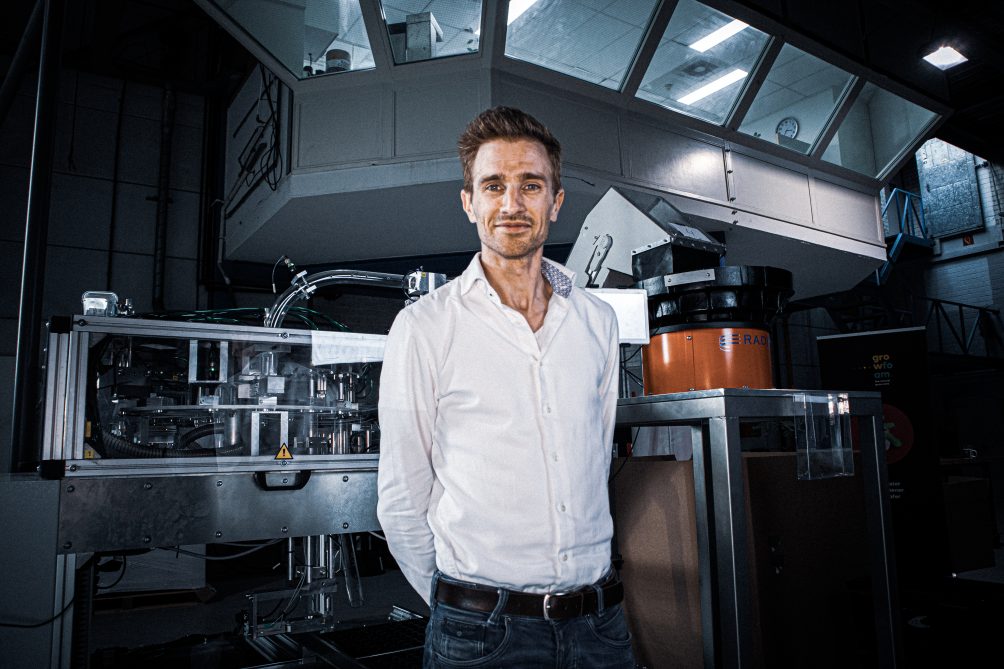
As consumers, we depend on foam. It is used in large quantities in mattresses, chairs and sofas, but unfortunately it is often not sustainable. The Groningen scale-up Foamplant is focusing on the production of a circular variant, suitable for use in furniture and horticulture, among other things. “Our foam can be reused again and again, up to 10 times, for new applications,” says CEO Martin Tietema. He answered six questions about his company for Innovation Origins.
How important is it for the world to switch to circular foam?
A lot of products today are available in circular form. Take an office chair, for example. The hard plastic, steel and textiles are all reusable. The only exception to the rule is the foam that goes into the chair. The used foam often ends up in a landfill. In the worst case, you find it back in nature, where it lingers for years because the material is not biodegradable. So it’s high time we switched to circular foam and that’s what we’re focusing on.
What exactly makes your product sustainable?
Regular foam you can make as hot as you want, but you can never melt it down again. It doesn’t liquefy anymore, which makes it difficult to reprocess. We use biopolymers where this is possible. You can melt the material, shred it and turn it into raw material from which new foam is made.
We are committed to reusing our product in new applications. The foam can be recycled up to 10 times. But should the foam end up in the river in exceptional cases, it will be broken down by fungi and bacteria. Fortunately, it doesn’t float around forever.

Does using the foam provide any other benefits?
The materials we use are inherently fire retardant. There are no additives needed that are used in regular foam, which often contains unhealthy substances. A balance must then be made between fire safety on the one hand and a healthy living environment on the other. With our foam, you no longer have to make that choice.
This production method also has health benefits. The conventional foam industry allows polymers to react with each other, creating a completely interwoven structure. This is a reaction that can never be fully completed. Residues are created that evaporate from the material. This is why there is often a strong smell in a brand new car. For the average person, these fumes are not such a big problem, but for asthmatics, for example, they are.
Read also: Triple Helix wants to make all PU foam recyclable
In what way are you involved in horticulture?
Growfoam, our horticultural product, is the first product we launched. It is a nutrient layer developed for growing young plants from seed or cuttings. Horticulture is becoming more sophisticated and it is becoming more important to grow clean. Now peat substrate is often used to grow crops. Peat soil stores CO2 in large quantities. Given the climate problems, it is not unwise to leave the peat where it is. You also destroy peat bogs when you dig them up. Growfoam is sustainable and can be disposed of together with green waste. Customers use it mainly in vertical farms to grow herbs, salad crops, cucumbers, flowers and much more. The sky is the limit.
What stage are you currently in? Are the products already market-ready?
Growfoam is already available on the market. We are currently working hard to scale up the production capacity of foam products for applications in furniture and mattresses. We expect to have products in stores that incorporate our foam by 2023 and are also in talks with producers of mattresses and furniture. Our goal is for our foam to be processed into fully circular products. If it is processed in chairs that cannot be properly disassembled or are used in combination with non-circular products, then of course it doesn’t help as much.
Foamplant is still a young company. Where are the biggest challenges at the moment?
Foamplant is indeed still a start-up company. We are still dealing with inefficiencies in our production process, while we also notice that there is a push from the market to start working with the products. What we see, for example, is that there are still some fluctuations in the production parameters at the detail level which is why we reject batches. These are minor fluctuations, so we are almost there. Fortunately, in the meantime, things are going right more often than they are going wrong. And of course it’s super cool to see that the market is so open to our product.
Read other stories about Groningen here.

